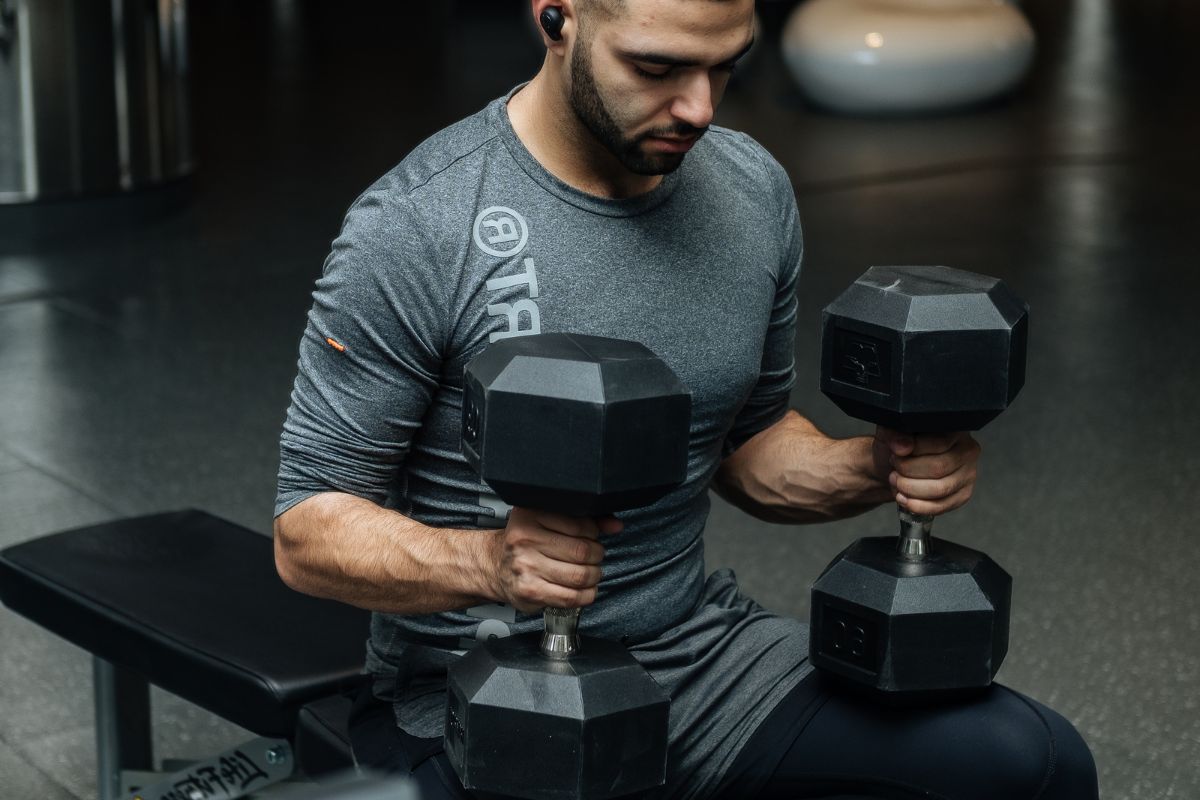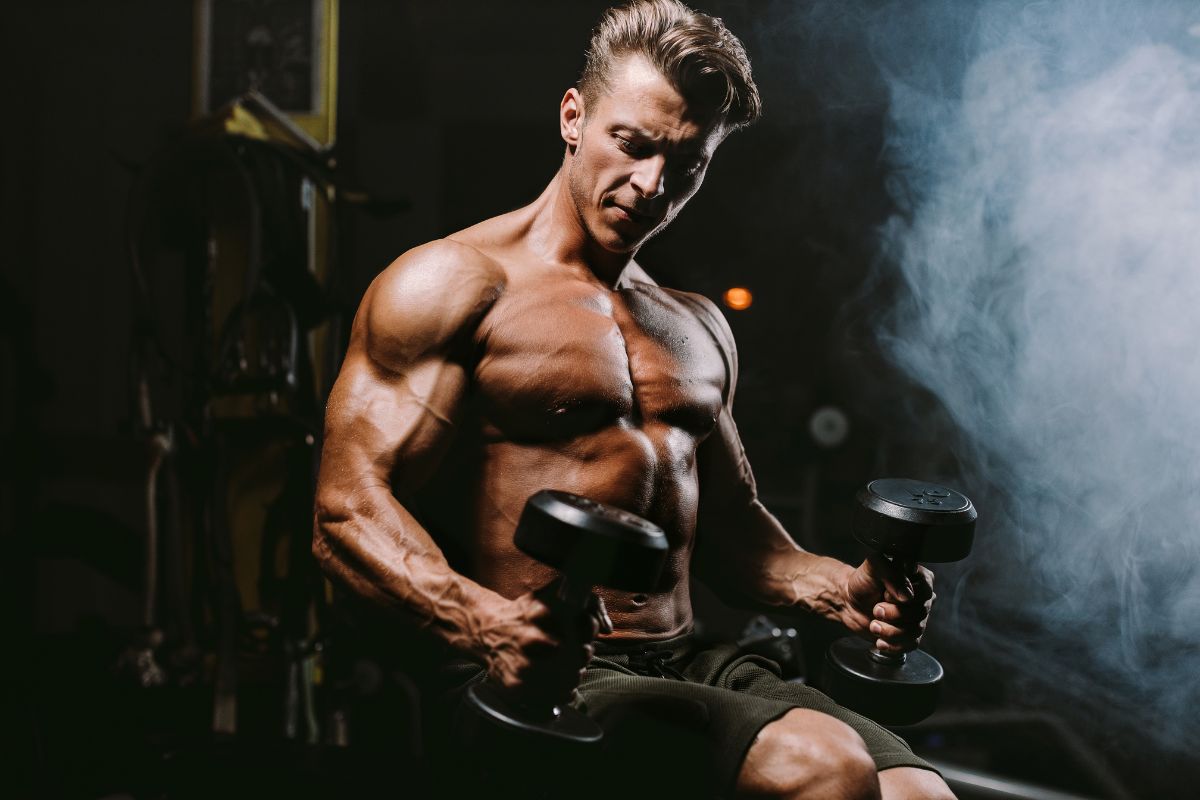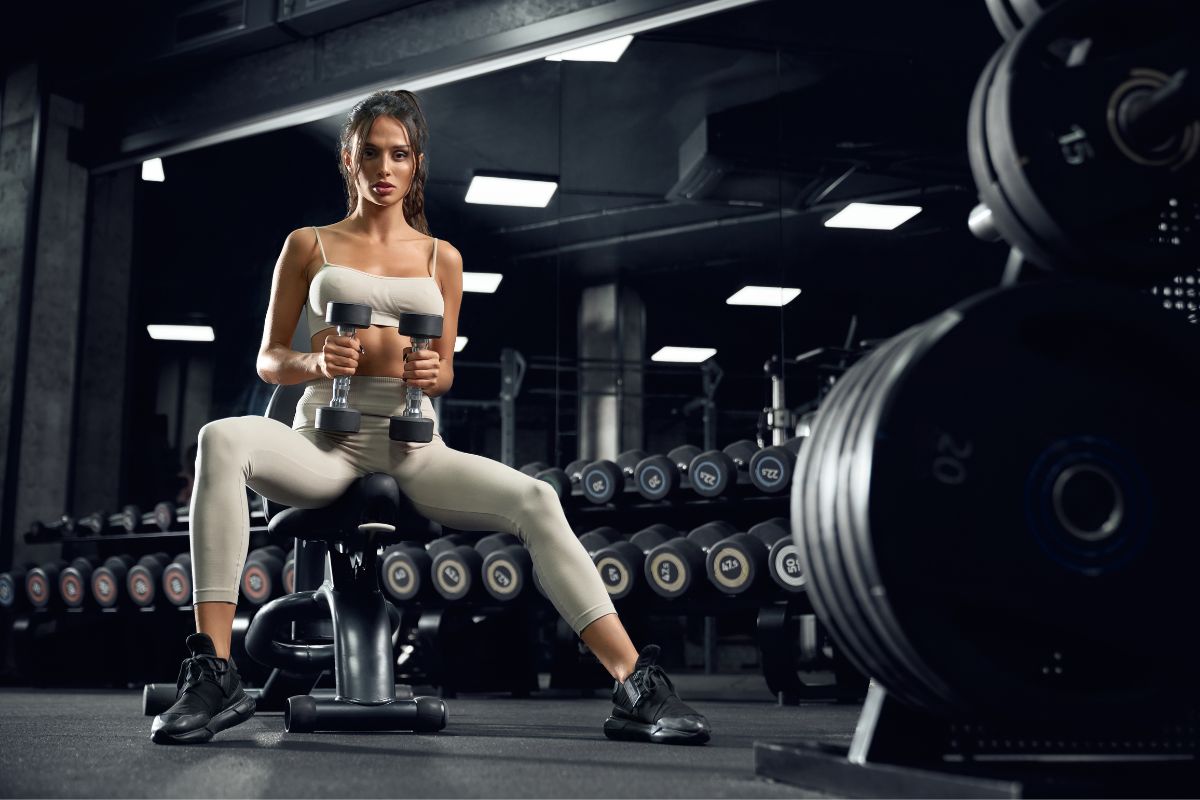Last Updated on December 28, 2022 by admin
If you’ve been training for a while, you might be aware that there are certain parts of your body that are hard to get into shape. One of these is the glutes and another one is the lower chest. But what is the reason for this difficulty?
This is because the chest is made up of separate muscles that can be hard to isolate. You have the lower pectoral muscles (also called the pectoralis major) and the upper pectorals (called the pectoralis minor).
But what are the exercises that train the larger lower pectoral muscles? How do you engage with these muscles without putting too much strain on your joints?
Well, we have all the info you need on this muscle and how to achieve great definition in your chest with great dumbbell workouts!
What Muscles Are In The Chest?
The chest is made up of two primary muscles, the upper pectoral (known as the pectoralis minor) and the lower pectoral (known as the pectoralis major).
These muscles often work in tandem with the muscles in the arms, the shoulders, and the upper back, forming a system that is balanced and helps you with upper body strength and dexterity.
When you are training this muscle, you’ll want to achieve hypertrophy. This is very important for growing muscle and increasing the amount of muscle tissue that you have.
If you are trying to train this muscle, then there are various techniques that you can use. You can use a cable fly, which will allow you to switch the tension from various angles that will allow you to target different portions of the muscle.
You can also use a barbell, as this will allow you to pile on the weight. However, this can be quite restrictive when you are trying to get a decent range of motion.
This is why dumbbells are great for developing your chest.
Why Use Dumbbells For Chest?
Dumbbells sit somewhere between the cable fly and the barbell in that you can add a lot of weight, but you also have plenty of versatility, using the weights to target the different parts of your chest.
Now, if you are targeting the lower part of your chest, then you’ll need to decline your body in a manner that might at first be quite uncomfortable.
This is because the further down you go, the more you’ll have to push against yourself, which will increase the strain on the lower chest muscle.
Another great thing about using dumbbells is that you can alter your weight as you see fit. You can also do this with a barbell, however, with a barbell you might need to have a partner to spot you in case the weight is too heavy.
The great thing about dumbbells is that you can do the same exercises as a barbell, although you will have a much freer range of motion.
Some people think that dumbbell exercises are not effective, but because of the increased range of motion and the ability to add and subtract weight, these weights have been shown to be great at building chest muscle.
But you’ll have to make sure that you are doing the right exercises that target your lower chest muscles. Proper form is also very important for achieving proper muscle growth.
This means that you’ll have to know how your equipment works and how to use it effectively.
Some Great Lower Chest Workouts

1. Decline Dumbbell Press
This is one of the best exercises that you can do to isolate and develop that primary muscle in your lower chest. But angling your body downwards, you’ll have to push upwards at such an angle that you’ll be really working that sternal head.
This also helps you work your delts, traps, and lats. These are very important secondary muscles that will help stabilize your movements.
Here is a step-by-step guide for getting this exercise just right:
1. Put your workout bench on a decline, making sure that your head is at the lowest end.
2. Pick up a dumbbell in each hand. If you are doing this exercise for the first time, then we would recommend that you use an intermediate weight.
3. Hold the weights beside you at shoulder height and puff out that chest.
4. Breathing out in a controlled manner, push the weights upward and together until your hands are beside each other on the midline of your chest. You should feel a contraction in your chest as you push upward.
5. Once you have held this upper position for a few seconds, then release the dumbbells into the lower position again.
Keep doing these until you have completed the number of reps that you think are suitable. Remember to exhale in a controlled breath as you push your weights upward.
If you are going to mix and match exercises, then make sure you do this workout before starting on your triceps. This is because a decline dumbbell press will max out your triceps too.
2. Decline Dumbbell Fly
This is a fly, meaning that your arms are more stretched out than in the previous exercise. This one is meant to target both the major and minor pectoralis.
This also attacks the short head of your triceps, which is often very important for developing overall muscle growth.
Ordinarily, a dumbbell fly will target the whole chest, but because you are on a decline angle, your lower chest will be more emphasized.
Here’s how to tackle this exercise:
1. Put your bench at a 30-degree decline with your head at the lowest end.
2. Hold out the weights on either side of you with a slight bend in your arms. If you are trying this exercise for the first time, then we would recommend that you use a medium weight.
3. Keeping your arms straight, pull them up until the dumbbells are almost touching over the midline of your chest. You can press your weights together, keeping your chest nice and tight.
4. Once you have squeezed, then lower your dumbbells to your side again.
Once you have done this, then repeat for however many reps that you feel are necessary. Take care not to overdo it at the beginning, as a heavy weight could cause you to tear one of your pectoral muscles.
Make sure that you keep this exercise slow and controlled, completing the full range of motion. If you allow the weight to yank your arm down, then you might suffer an injury.
3. Dumbbell Pullover
This exercise will require you to lie across your bench with your knees up and your feet planted firmly on the floor. This will help you to develop the muscles around your ribcage as well as the ones in your back and chest.
All you’ll need for this is one heavy dumbbell that you’ll be pulling over your head. This will also activate your triceps, which is super important for chest and shoulder definition.
Here is how to complete this exercise:
1. Lie on the bench facing sideways. Arch your back slightly and make sure that your shoulders and feet are in line and firmly planted on the surfaces.
2. Take your dumbbell with both hands and hold it behind you.
3. Slowly lift the dumbbell in an arc so that it goes over your head and chest. Make sure you are breathing out in a controlled manner and that you are exhaling as you breathe outwards.
4. Once you have lowered your dumbbell as close to your ribcage as possible, lift it back up toward the starting position behind your head. This is one rep.
Repeat this movement as many times as you can. Make sure that you do not strain yourself and grip the weight tightly.
Contract your hips as you are lifting the weight over your head. This will help you to really push so you can get that dumbbell clear over your head.
4. Decline Hammer-Grip Dumbbell Bench Press
This next workout is a compound exercise in that it works many muscles at the same time.
This is because the triceps and the shoulders also function as secondary muscles in their exercise, featuring a heavy degree of tension themselves.
This type of lift requires you to adopt a neutral grip as opposed to a pronated grip.
This means that there will be less pressure placed on the shoulders, which is an area that can often suffer strain, especially when you are doing this move.
Here is how you can successfully perform this move:
1. Lying on your bench set to a decline with your head at the lower end, grab two dumbbells using a hammer grip and place them at either side of your shoulders.
2. Press the weights in much the same way as you would do with a barbell. Stop when both dumbbells are raised above the midline of your chest.
3. When you reach this point, make sure you squeeze your chest together to get that pump.
4. Once you have done this, lower the dumbbells until they are on either side of your shoulders in the starting position again.
Repeat this exercise as many times as you need to. Make sure that you are not locking out your elbows as you are returning to the starting position of your exercise.
5. Dumbbell Decline One-Armed Fly

This is what is known as a unilateral exercise in that it only works out one side of your body. If you are looking to regain some strength in one arm after you have suffered an injury, then this is a great exercise for you, as it emphasizes symmetry.
This will help you not only build up strength in the weaker side of your body, but it will also help you to work out some of the muscles in your ribcage too.
Here is a step-by-step guide to performing this exercise:
1. Hooking your feet under the rollers, lie back on the bench on a decline, with your head at the lowest end.
2. Grab your dumbbell and stretch it out beside you at shoulder length in much the same way as you would do with a normal fly. You can either leave your arm hanging down by your side or use it to support your other shoulder during the fly.
3. Lift up your arm slowly until it comes midway over your chest. Tense your pectoral muscle and corresponding abdominals.
4. Lower your weight back to the starting position after you’ve done this.
Repeat these exercises as many times as you think is necessary. Make sure that you breathe properly during these exercises. If you are trying to improve a weakness, do not start with a heavy weight, as this might cause more injury in the long run.
Do not lower the weight past the shoulder. If you feel any pain in your shoulder joint, then this means that you’ve gone too far down.
6. Dumbbell Decline Twist Fly
This workout will isolate all the muscles in your chest, with a particular focus on the lower portion of your chest. This will require you to twist the dumbbells in your hand as you are doing the maneuver.
Here’s how to do the dumbbell decline twist fly:
1. Place your dumbbell at a 30-degree decline, with your head lying at the lowest point. Start with your dumbbells over your head at the midline of your chest.
2. Lower the dumbbells down, twisting your hands from the neutral position to a pronated grip as you move. This will cause different parts of your chest and arm to be activated during the exercise.
3. Once you have reached chest level, squeeze your pecs and push your dumbbells upwards again. Make sure you twist as you go upwards too.
Repeat these actions until you start to feel the burn. We would recommend starting with 3 sets of 8 reps and then, over time, increasing the reps and the weight.
When you are bringing the dumbbells back up to the highest point, you’ll want to make sure that they clang together. This will be a way of keeping track of your reps.
We would recommend that you vocalize your reps, as this has been shown to encourage the mind/muscle connection.
Make sure that you are taking controlled breaths as you are pushing your dumbbells upward. This will make sure that you are really delivering as much oxygen to your straining muscles as possible.
Frequently Asked Questions
Why Should I Target My Lower Chest?
You might be targeting this part of your muscle for many different reasons. Most of the time, people will just want a cosmetic symmetry of their upper and lower pectorals being a nice and rounded size.
Having defined pectorals will also allow you to perform moves with a lot more skill, going right through the complete range of motion.
How Best To Target My Lower Chest Muscles?
You can target your lower chest with many different types of exercises. We would say that the dumbbell decline is probably one of the best exercises for highlighting it.
However, we would also recommend that you use a cable fly, as you can adjust it to many different positions to target different muscle groups.
How Often Should I Train My Lower Chest?
We would recommend that you target this muscle at least 1 – 2 times per week. Consistency is very important, and you can even start measuring this muscle to check its progress.
Conclusion
Getting a big lower chest is very tough and even the most experienced bodybuilders and sports scientists struggle with this muscle.
However, we hope that our list of decline dumbbell exercises has given you a better idea of how to develop it and start seeing those serious gains.

